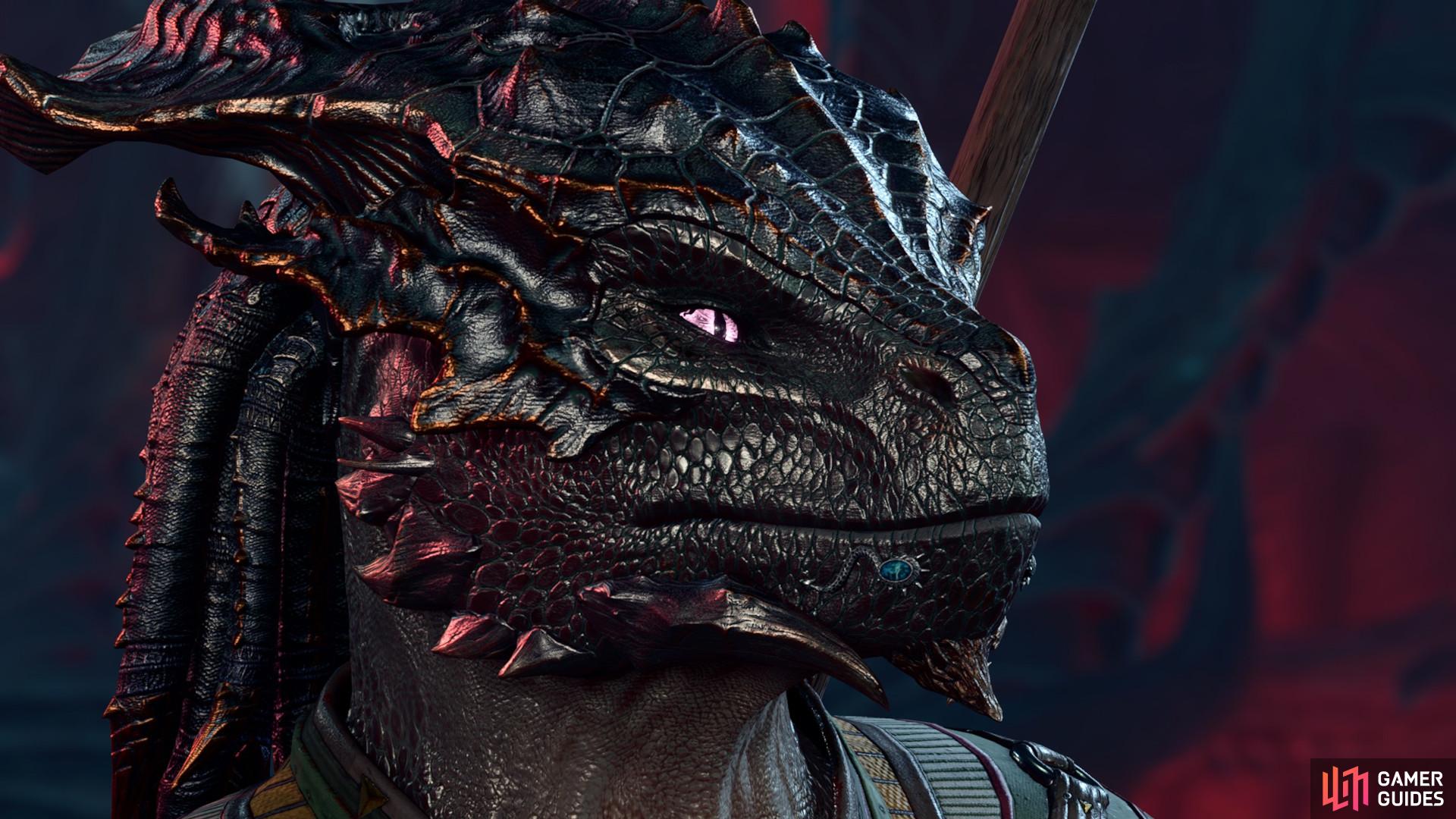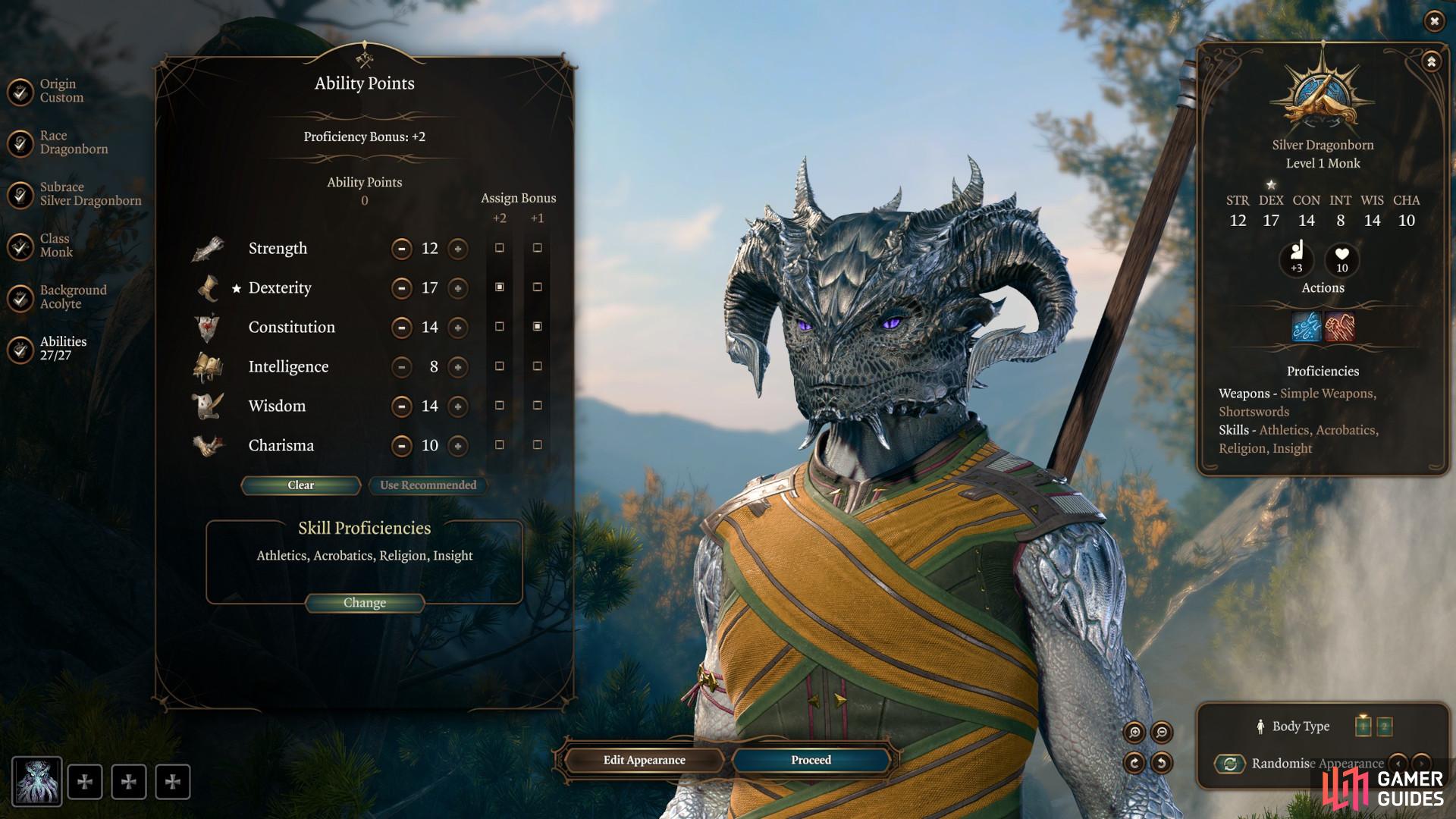The !Monk is the final class to be added to Baldur’s Gate 3, arriving on launch day to offer players a lot of unique gameplay styles, particularly for the unarmed playstyle. While Larian has somewhat homebrewed to prevent the !Monk from being the likely worst class, as compared to its low approval rating of 5e fans, the !Monk now gets a few surprising roles. What this build intends to do is to take advantage of the rule changes, so the !Monk can enjoy lots of new features and other benefits. We will take advantage of this by using a Four Elements !Monk Build in Baldur’s Gate 3, thanks to the possible abuse you can make from the game’s Vulnerable and multiclassing rule options. We will also show you the best races, and feats you can run.
Best Baldur’s Gate 3 Four Elements Monk Build¶
Look at a Baldur’s Gate 3 Monk build using Four Elements, Tempest Cleric and Draconic Sorcerer.
The !Monk Build we are going to run is going to look as follows:
- Four Elements !Monk: 9
- Tempest !Cleric 2:
- Draconic Bloodline !Sorcerer: 1 - Likely go white Dragon for the
 Armor of Agathys spell, but, other options are fine too.
Armor of Agathys spell, but, other options are fine too.
The reasons for these options are very simple. !Monk is your main class for scaling into the late game, where you will get your feats, Ki point upgrades, and other !Monk-like unarmed strike stuff. At level 9, you will also get the final unlock of the Disciple of your Elements, allowing you to increase the amount of Ki points you can spend.
You also want to multiclass twice for two reasons. The first is for Tempest !Cleric. At level 2 Tempest !Cleric, you get access to the Destructive Wrath and the Wrath of the Storm passive. Destructive Wrath is a damage reaction passive, which you can use to deal either thunder or lightning damage, as per your four elemental damage types. Meanwhile, Wrath of the Storm allows you to cast either your Lightning or Thunder damage as the max damage roll possible one per long rest. This offers you some very big burst options for two elemental damage types, which the !Monk can use via its Ki points from the Four Elements spell types.
Lastly, you want one point in Draconic Bloodline !Sorcerer. This grants you be the default starting AC of 13, which is very good, since you’ll be a front-line character. Moreso, a lot of items in the game give !Monks decent synergy either through medium, or no armor type at all, depending on the buffs you get. Throw in items like the ![]() Bracers of Defence, and you can have something along the lines of 18/19 AC with no armor at all, thanks to those gloves, your Dex AC (Armor Class) modifier, and the !Monk’s Wisdom AC passive too while not wearing armor. Also, since you’re a Dex class, you will get AC bonuses that way too, so, that contributes to being much harder to damage despite your fragile playstyle.
Bracers of Defence, and you can have something along the lines of 18/19 AC with no armor at all, thanks to those gloves, your Dex AC (Armor Class) modifier, and the !Monk’s Wisdom AC passive too while not wearing armor. Also, since you’re a Dex class, you will get AC bonuses that way too, so, that contributes to being much harder to damage despite your fragile playstyle.
The other benefit you get for 1 point in Draconic Bloodline Sorcery is the dragon-type passive. You can likely take White here for the Armor of Agathys, which grants cold damage to enemies that do hit you. This is again important, for cold damage options Four Elements has, and the final vulnerability you can apply. Also, don’t worry about Charisma scaling with Sorc, you’re only doing it for the AC passives and the dragon descendant spell bonus.
Four Elements Monk Spells to use in this build¶
As alluded to Vulnerable damage in this game is rather silly. Simply put, you can make a character Wet, and all lightning and cold damage you deal will do double damage to the target. Since you have access to spells like ![]() Blade of Rime,
Blade of Rime, ![]() Chill of the Mountain, Touch of the Storm, there’s plenty of opportunity to apply this double damage effect from your Four Elemental spells. And, if you went white dragon as we mentioned, that’s potential double damage from cold damage against attackers.
Chill of the Mountain, Touch of the Storm, there’s plenty of opportunity to apply this double damage effect from your Four Elemental spells. And, if you went white dragon as we mentioned, that’s potential double damage from cold damage against attackers.
On top of this, you can spend your Ki points on spells like the ![]() Water Whip,
Water Whip, ![]() Gong of the Summit, and Fist of Four Winds. Water Whip deals cold damage, and can drag enemies to you, or over holes for cheese kills. Meanwhile, Gong is a 3D8 Thunder Damage skill, and likely the skill you spend your Tempest passive on for its better damage profile. Fist of Four wave is another good spell for knockback, and does 2D8 thunder damage. Again it is another skill to abuse the environment with and apply your Tempest passives too for more damage, combined with potential fall damage too.
Gong of the Summit, and Fist of Four Winds. Water Whip deals cold damage, and can drag enemies to you, or over holes for cheese kills. Meanwhile, Gong is a 3D8 Thunder Damage skill, and likely the skill you spend your Tempest passive on for its better damage profile. Fist of Four wave is another good spell for knockback, and does 2D8 thunder damage. Again it is another skill to abuse the environment with and apply your Tempest passives too for more damage, combined with potential fall damage too.
These skills are likely your bread and butter for Four Elemental synergy, and this is on top of your regular !Monk unarmed attack type spells like ![]() Flurry of Blows, for more general combat.
Flurry of Blows, for more general combat.
As for your concerns about creating water, don’t worry; you have two tools for this. ![]() Sphere of Elemental Balance is a 3D8 thunder skill, so another high-damage skill for your Tempest modifiers. It also creates a surface on impact, which could be water. This can allow you to follow up the vulnerable damage, and create hazardous electrified zones for stunning, or ice for slipping targets up as CC terrain.. If you can do this, that’s potential Water Whip synergy to drag enemies into patches of danger and CC them too! The other is Create Water in your !Cleric spell options.
Sphere of Elemental Balance is a 3D8 thunder skill, so another high-damage skill for your Tempest modifiers. It also creates a surface on impact, which could be water. This can allow you to follow up the vulnerable damage, and create hazardous electrified zones for stunning, or ice for slipping targets up as CC terrain.. If you can do this, that’s potential Water Whip synergy to drag enemies into patches of danger and CC them too! The other is Create Water in your !Cleric spell options.
Overall, this Baldur’s Gate 3 utilizes a mechanic to increase the !Monk’s damage output using several class and game features, and becomes a solid mix of melee damage and battlefield control. Think of yourself akin to a Wizard’s damage, except with more frontline controls, rather than backline control.
Best Monk Feats in Baldur’s Gate 3¶
Now, it’s time to take feats. You have several really niche options here. The best is likely starting attribute scores stuff, but, there are a few alternatives you can use depending on how you want to pivot with your party composition:
- Ability Score Improvement - You increase one Ability by 2, or two ability scores by 1, to a maximum of 20. There’s not many feats that stand out that much for !Monks, so, feel free to slap points in your ability scores to become even stronger in Con or Dex for damage and tankyness improvements. You can also improve Wisdom for party face conversation options and AC scalings via the class passive.
- Medium Armor Master - When you wear Medium Armor, it doesn’t impose a Disadvantage on Stealth Checks. The bonus to armor class you can gain from Dexterity becomes +3, rather than +2. This will make the Unarmored defense passive fail, but, you’ll get more stealth options if that’s something you want.
- Resilient: You increase an ability by 1, to a maximum of 20, and gain Proficiency in that Ability’s saving throw.
- Tavern Brawler: When you make an unarmed attack, use an improvised weapon or throw something and add your Strength Modifier twice to the damage and attack rolls. - There are some items in Act 1 and beyond that grant improvised attack modifiers, so with the right gear, this feat can be fairly strong.
Best Monk Races in Baldur’s Gate 3¶
Dragonborn are one of the best Four Elements monk races for more elemental breath options for their damage.
When creating your character, you have a lot of options for !Monk. There’s normally a case for each race and why you can make a viable !Monk regardless of race. We’ve thrown a few options below. The ones at the top of the list are the ones we think are better. As for your starting ability scores, the default options are fine, as you get your +2 to Wisdom and Con, and your Dex is at 17. It means you have great initiative, armor class, and health to be strong with your damage and your tankyness via health and armor.
Dragonborn: Either Blue, Bronze, Silver or White for the ![]() Cold and Lightning modifiers for your Vulnerable damage scaling. You cast a breath that either deals cold or lightning damage in a cone once per long rest. It also adds more CC opportunities too when you interact with hazardous surfaces!
Cold and Lightning modifiers for your Vulnerable damage scaling. You cast a breath that either deals cold or lightning damage in a cone once per long rest. It also adds more CC opportunities too when you interact with hazardous surfaces!
Halfling: Gain Lucky and Brave as racial feats. Lucky allows you to re-roll 1s on attacks, damage and saving throws. Brave is also handy against Frighten CC effects. The subraces also have niche benefits like Lightfoot for Stealth advantage, or Strong for Poison resistance.
Gnome: Gnome cunning helps with saving throws to Charisma, Intelligence, and Wisdom. Deep Gnome also comes with better stealth checks if you want better stealth-style gameplay for your party.
Drow: Weapon proficiencies in Rapier and Shortsword for the !Monk weapon passive.
Elves - Grants proficiency with Shortswords, one of the weapon types benefit from unarmed attack, the !Monk class feature.
Tiefling - You get ![]() Thaumaturgy from Zarial, which can help you party check for intimidation and Performance checks while you act as the face of the party. Mephisto is fine too, as you can use
Thaumaturgy from Zarial, which can help you party check for intimidation and Performance checks while you act as the face of the party. Mephisto is fine too, as you can use ![]() Mage Hand for any annoying things where Mage Hand cna help you reach locations. Asmodeus grants produce flame, which is an option for any thrown damage modifiers your class may use.
Mage Hand for any annoying things where Mage Hand cna help you reach locations. Asmodeus grants produce flame, which is an option for any thrown damage modifiers your class may use.
This concludes the Four Elements !Monk Build for Baldur’s Gate 3. You now have an idea on your playstyle and options available for damage, CC, and other generally versatile options for this class.
Read More:



 Sign up
Sign up
No Comments